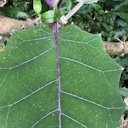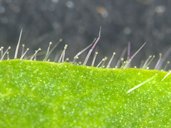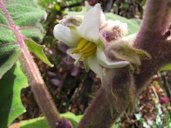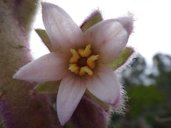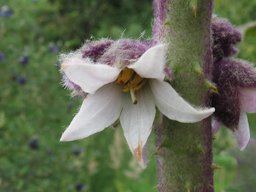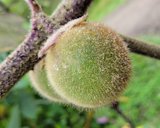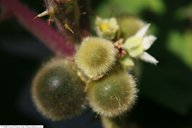| Naranjilla - Solanum quitoense | |||||||||||||||||||
|---|---|---|---|---|---|---|---|---|---|---|---|---|---|---|---|---|---|---|---|
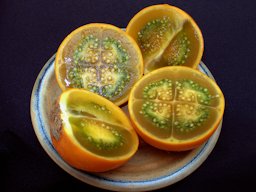 Fig. 1  Solanum quitoense. In Colombia it is known as 'lulo', in Ecuador as 'naranjilla'. Very aromatic fruit; the pulp is used to prepare a delicious juice. 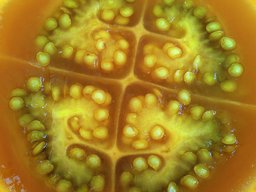 Fig. 2  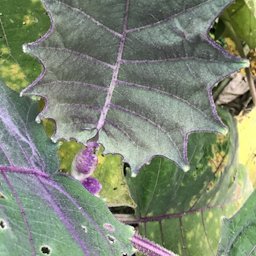 Fig. 3  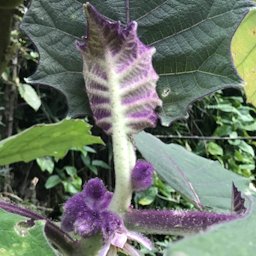 Fig. 4  S.quitoense new growth  Fig. 5  S. quitoense in the Trial Gardens at the University of Ga., Athens 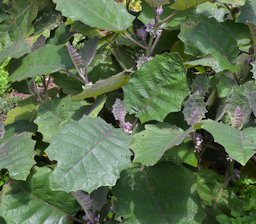 Fig. 9  Naranjilla leaf habit 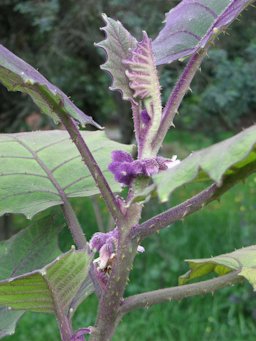 Fig. 10  S. quitoense. Jardín Botánico "José Celestino Mutis", Bogotá. 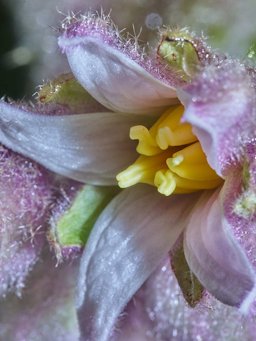 Fig. 11 Quito-Orange S. quitoense, Puntarenas Province, Monteverde, Costa Rica 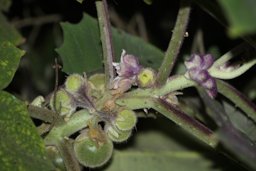 Fig. 15  S. quitoense, fertile branch 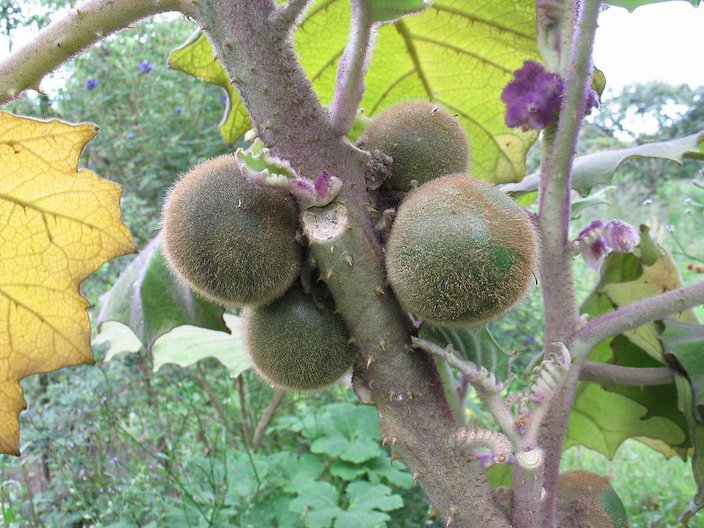 Fig. 16 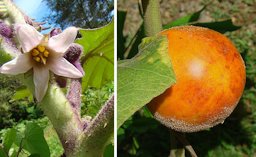 Fig. 17  Quito-Orange S. quitoense, Quijos, Ecuador 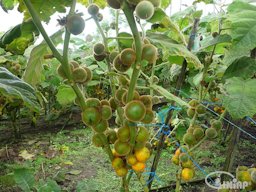 Fig. 20  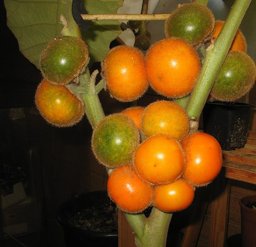 Fig. 21   Fig. 22  Quito-Orange S. quitoense, Pacto, Ecuador  Fig. 23  INIAP seminar on the cultivation of the naranjilla 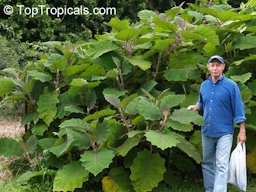 Fig. 24  S. quitoense, S. angulatum habit  Fig. 25  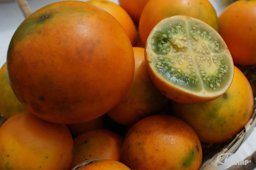 Fig. 26   Fig. 27  Agua frescas lulo juice 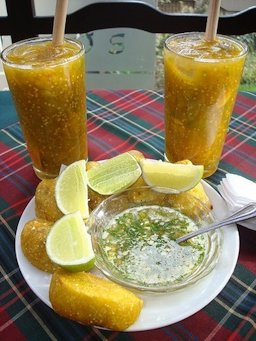 Fig. 28  Luladas served with empanadas. Lulo, lime juice, water, and sugar. Traditional Colombian beverage from Cali, Columbia. |
Scientific
name Solanum quitoense Lam. Pronunciation nahr-an-heel-lyah Common names English: naranjilla, golden fruit of the Andes, Quito orange; Spanish: Ecuador: naranjilla de Quito, nuqui; Peru: naranjita de Quito; Mexico: lulun; Colombia: lulo, naranjilla, toronjalulo; French: morelle de Quito; naranjille; orange de Quito; Dutch: gele terong; German: Quito-Nachtschatten; Swedish: Naranjilla 2,8 Synonyms S. angulatum Ruiz & Pav., S. quitense Kunth, S. quitoense f. septentrionale (R.E. Schultes & Cuatrec.) D'Arcy, S. macrocarpon, S. nollanum, S. quitoense var. septentrionale 1,4,8 Relatives Cocona, S. sessiliflorum; pepino or melon shrub, S. muricatum; tree tomato, tamarillo, S. betaceum, Cape goosebery, Physalis peruviana 8,9 Family Solanaceae (nightshade family) Origin Native to the Andean region, Ecuador, Peru, Columbia 5 USDA hardiness zones 10-12 Uses Food; juice Height 8 ft (2.5 m) 2 Plant habit Perennial; spreading herbaceous shrub 2 Growth rate Fast Longevity 2-4 years under favorable conditions Trunk/bark/branches Thick stems that become somewhat woody with age 2 Pruning requirement Remove basal stems, old leaves; cut back to rejuvenate Leaves Large; soft; velvety; purple-veined; heartshaped or oval-shaped Flowers Fragrant; creamy to white; lower surface purple, hairy; buds with purple hairs 8 Fruit Round; orange when ripe; green flesh; brown hairy coat; up 2½ in. (6.25 cm); clusters of 3- 4; juicy; thick peel Season Winter USDA Nutrient Content pdf Light requirement Full sun to semi shade Soil tolerances Best in well-drained rich organic soil; will also grown on poor, stony, calcareous soils pH preference 6.5-7.0, tolerating 5.8-8.0 4 Wind tolerance Not tolerant Cold tolerance Intolerant of frost Plant spacing 6-8 ft (1.8-2.4 m) apart each way 2 Invasive potential * Nona reported Pest resistance Rootknot nematodes a serious problem Known hazard People with very sensitive skin may find the hairs on the fruits irritating 2 Reading Material Naranjillo, Solanum quitoense L., University of Florida pdf (Archived) Naranjilla, Fruits of Warm Climates Naranjilla, PROSEA Foundation "New" Solanums, Perspectives on New Crops and New Uses, Purdue University Naranjilla, Lost Crops of the Incas Origin Native of the the Andean highlands of Ecuador, Peru and Colombia, now it has been introduced into most tropical and subtropical regions of the world as a fruit crop. In recent years, it has been introduced in South-East Asia mainly in Indonesia and the Philippines. 6 Description An intriguing and highly appealing member of the nightshade family, Solanaceae, the naranjilla, Solanum quitoense Lam. (syn. S. angulatum Lam.), acquired its Spanish name, meaning "little orange" because it is round, and is bright-orange when fully ripe. 2 It is grown in southern Florida at near sea-level. The naranjilla cannot tolerate temperatures over 85 °F (29.4 °C). It is not adapted to full sun but favors semi-shade. Pollen aborts at high temperatures. 2 Other plants bear morphological similarity to S. quitoense, but they may or may not be closely related. Some of these plants are: S. hirtum, S. myiacanthum, S. pectinatum, S. sessiliflorum and, S. verrogeneum. Many of these plants, related or not, can be confused with S. quitoense. Furthermore, Solanum quitoense's physical traits vary from plant to plant, making identification challenging: at least three varietals (with spines, without spines, or a third variety known as baquicha, which features red-ripening fruits and smooth leaves) are known to occur. One characteristic that is unique to S. quitoense is the ring of green flesh within the ripe fruit. 4 The new growth of this plant is densely covered in protective trichomes (Fig. 7,8). Coloration in the plant's trichomes (hairs) around the new growth and flowers varies from purple to white. Identification can be difficult for this reason. 4 The naranjilla (Solanum quitoense), the cocona (Solanum sessiliflorum) and their hybrid, NewCrop™, Purdue University Leaves The alternate leaves are oblong-ovate, to 2 ft (60 cm) long and 18 in (45 cm) wide, soft and woolly. There may be few or many spines on petioles, midrib and lateral veins, above and below, or the leaves may be completely spineless. Young leaves, young stems and petioles are coated with richly purple stellate hairs. Hairs on other parts may appear simple. 2
Fig. 6. Quito-Orange S. quitoense, Reserva La Esperanza, Moniquirá, BY Fig. 7. S. quitoense leaf margin trichomes Fig. 8. Petiole trichomes Flowers Borne in short axillary clusters of as many as 10, the fragrant flowers, about 1 1/5 in. (3 cm) wide, have 5 petals, white on the upper surface, purple hairy beneath, and 5 prominent yellow stamens. The unopened buds are likewise covered with purple hairs. 2
Fig. 12. S. quitoense (naranjilla, lulo, little orange), flowers, Pali o Waipio, Maui, Hawai'i Fig. 14. S.quitoense. Jardín Botánico "José Celestino Mutis", Bogotá. Pollination Naranjilla flowers are hermaphrodite and can be self-fertile or show allogamy, depending on insects for pollination. 10 Flowers can have short, medium or long styles, and the last two types can be cross-pollinated. Pollination is performed by insects such as honey-bees and bumblebees. 9 Fruit A brown, hairy coat protects the fruit until it is fully ripe, when the hairs can be easily rubbed off, showing the bright-orange, smooth, leathery, fairly thick peel. The fruit, crowned with the persistent, 5-pointed calyx, is round or round-ovate, to 2 1/2 in (6.25 cm) across and contains 4 compartments separated by membranous partitions and filled with translucent green or yellowish, very juicy, slightly acid to acid, pulp of delicious flavor which has been likened to pineapple-and-lemon. There are numerous pale-buff seeds, thin, flat, hard and 1/8 in (3 mm) in diameter. Because of its sequential and continuous flowering habit, the plant will simultaneously have flowers and small, medium and ripening fruit. Fruit mature in 50-60 days. 2,10
Fig. 18. Quito-Orange S. quitoense, Mindo, Ecuador Fig. 19. S. quitoense, United States Botanic Garden Varieties Two varieties of Solanum quitoense are recognized: Solanum quitoense var. quitoense, a spineless form found in southern Colombia and Ecuador and Solanum quitoense var. septentrionale, a form with spines found in central Colombia, Panama and Costa Rica. 4 Harvesting Though everbearing in its natural habitat, the naranjilla fruits mainly in the winter in Florida; rarely, or very lightly, in the summer. For eating out-of-hand, the fruits are picked fully ripe, at which stage the calyx naturally separates from the fruit, leaving a circular depression. 2 The colouration of the fruit from green to yellow-orange takes place several months before maturity. During this stage, the fruit is too immature to eat, although by appearance alone one would be tempted to eat it. 12 Because of the continuous bearing, fruits must be collected every 7 to 10 days. A healthy plant bears 100 to 150 fruits a year. 2 Fully ripe naranjillas soften and ferment very quickly. Fruit picked when half colored will remain in good condition at ordinary temperatures for 8 days. They can be stored for 1 or 2 months at 45-50 °F (7.22-10 °C) and relative humidity of 70 to 80 %. 2 Propagation The naranjilla can be propagated by air-layering or by cuttings of mature wood. In Florida, the naranjilla is easily cleft-grafted onto S. macranthum seedlings that have grown 2 ft (60 cm) tall and have been cut back to 1 ft (30 cm) from the ground, then split down the center for a distance of 1 to 2 in (2.5-5 cm). Selected scions 2 to 3 in (5-7.5 cm) long are inserted in the slit and tightly bound in place. It takes 2 to 3 weeks for the scion to fully unite with the stock. The plants are not set out until the scion has grown about 2 ft (30 cm). Other grafting methods–saddle, side, and whip–have also been successful. 2 Grafted plants begin to bear about 1 year from planting in the field. They continue fruiting for 2 years, then they die back and are replaced by young ones. 2 Fruiting begins 10 to 12 months after seed sowing, continuing for as long as three or four years before the plants begin to decline. 3 Climate The plant has exacting climate requirements. It does not tolerate frosts nor temperatures above 82.4 °F (28 °C). It prefers humid constant temperatures between 50-77 °F (10-25 °C) throughout the year. 12 Planting The plant does best in a rich, organic soil; also grows well on poor, stony ground, and on scarified limestone. It must have good drainage. In Latin America, naranjillas are planted on virgin soil in tracts where the large trees have been felled and the undergrowth burned off. The remaining trees provide semi-shade and wind protection. It is grown in southern Florida at near sea-level. 2 The naranjilla should not be cultivated in soil where it or other members of this family have been previously grown, because of root rot and nematode problems. It is preferably rotated with a non-susceptible crop for a couple of years to reduce the inoculum levels. Excess soil moisture that favors root infecting fungi should also be avoided. 9 Pruning The recommended pruning practices include: (i) formation pruning, which consists of eliminating all basal sprouts of the main stem below 15.7-19.7 in. (40-50 cm); (ii) maintenance pruning, which consists of eliminating the lower and old yellowish leaves to improve air movement and allow for easier weeding; and (iii) renovation pruning which is conducted if there is a heavy anthracnose of insect attack that damages too many fruit and there are no fruit in the basal part. In this case, cutting the plants back to 31.5-39.4 in. (80-100 cm) to stimulate new growth is advisable. 9 Fertilizing Naranjilla is a “heavy feeder” and responds well to fertilization. 11 Irrigation Naranjilla requires considerable moisture. It is commercially grown in the Andean areas where annual rainfall is 1,500–3,750 mm. The lower moisture limits are uncertain, but even moderately dry conditions check its growth. 11 Pests The chief enemies of the naranjilla are the rootknot nematodes (Meloidogyne sp.) and grafting on nematode-resistant rootstock is essential to fruit production in southern Florida. 2 Food Uses Ripe naranjillas, freed of hairs, may be casually consumed out-of-hand by cutting in half and squeezing the contents of each half into the mouth. The empty shells are discarded. The flesh, complete with seeds, may be squeezed out and added to ice cream mix, made into sauce for native dishes, or utilized in making pie and various other cooked desserts. The shells may be stuffed with a mixture of banana and other ingredients and baked. But the most popular use of the naranjilla is in the form of juice. For home preparation, the fruits are washed, the hairs are rubbed off, the fruits cut in half, the pulp squeezed into an electric blender and processed briefly; then the green juice is strained, sweetened, and served with ice cubes as a cool, foamy drink. A dozen fruits will yield 8 oz (227 g) of juice. 2 Naranjilla pulp is used in yoghurt and ice cream and is used as an instant soluble powder for preparing juice. Frozen pulp is exported, especially to the USA, as concentrate with 34% total soluble solids. It is quickly frozen after using a rotary evaporator at 35°C. Prepared juice is exported in this form as it retains its appearance for a long time. 9 When cultivated fruits are processed, the whole pulp is used leaving only the peel. This differs from cocona, which has a hard ‘hoof’ and partitions enclosing the juicy pulp with the seeds and has a different flavour and texture. 9 Lulada differs from the standard lulo juice in that the lulo fruit is not blended and strained during the drink's preparation. 9 Other Edibles in the Solanum Genus: Cocona, S. sessiflorum Pepino, S. muricatum Tamarillo, S. betaceum General A study done in 2018, concludes that S. hirtum (compatible with S. quitoense - naranjilla) and N. glauca (compatible with S. betaceum - tree tomato) might be used as rootstocks of Solanaceae fruit crops of commercial importance in Ecuador, contributing to the integrated fruit production system. 13 Further Reading Naranjilla: Favourite Fruit of the Andes, Archives of the Rare Fruit Council of Australia Biodiversity of Food Species of the Solanaceae Family: A Preliminary Taxonomic Inventory of Subfamily Solanoideae, Resources pdf List of Growers and Vendors |
||||||||||||||||||
| Bibliography 1 "Synonyms for Solanum quitense Kunth." The Plant List (2013), Version 1.1, www.theplantlist.org. Accessed 15 Nov. 2020. 2 Fruits of Warm Climates. Julia F. Morton. Miami, 1987. 3 "Naranjilla (Solanum quitoense)." Echo's Seed Bank, 23 July 2015, ECHO, www.echocommunity.org/en/resources/8e62dcfa-24dc-4a63-9f1a-4d8a30b54522. Accessed 16 Nov. 2020. 4 Whalen, M. D. "Solanum quitoense Lam." Solanaceae Source, Edited by L. Bohs, (CC BY 3.0), solanaceaesource.org/taxonomy/term/109207/descriptions. Accessed 16 Nov. 2020. 5 Lorenzi, Harri, et al. Brazillian Fruits & Cultivated Exotics (for consuming in natura). Nova Odessa, Instituto Plantarum de Estudos da Flora, 2006. 6 Jansen, P. C. M. "Solanum quitoense Lamk." Edible fruits and nuts, Plant Resources of South-East Asia No 2, Edited by Verheij, E. W. M. and Coronel, R. E., PROSEA Foundation, Bogor, Indonesia, record 1789,1991, PROSEA, (CC BY-NC-SA 3.0), www.prota4u.org/prosea/view.aspx?id=1789. Accessed 18 Nov. 2020. 7 Heiser, C., and G. Anderson. ""New" Solanums." Perspectives on New Crops and New Uses, Edited by J. Janick, pp. 379–384, 1999, NewCROP™, www.hort.purdue.edu/newcrop/proceedings1999/v4-379.html. Accessed 18 Nov. 2020. 8 "Solanum quitoense (naranjilla)." CABI, Invasive Species Compendium, www.cabi.org/isc/datasheet/50543. Accessed 20 Nov. 2020. 9 Paull, Robert E., and Odilo Duarte. Tropical Fruits, Volume II. 2nd ed., Cambridge, CABI, 2012. 10 Martin, F. W., et al. "Perennial edible fruits of the Tropics: an inventory." Agriculture Handbook, USDA, National Agricultural Library, NALDC, naldc-legacy.nal.usda.gov/catalog/CAT87886130. Accessed 20 Nov. 2020. 11 "Naranjilla (Lulo)." Lost Crops of the Incas: Little-Known Plants of the Andes with Promise for Worldwide Cultivation, National Research Council (U.S.), Advisory Committee on Technology Innovation, 1989, Internet Archive, Public Domain, archive.org/. Accessed 21 Nov. 2020. 12 Endt, Dick. "Naranjilla: Favourite Fruit of the Andes." Archives of the Rare Fruit Council of Australia, Growing Today (NZTCA), Apr. 1990, Sept. 1990, rfcarchives.org.au/Next/Fruits/SolanumFamily/Naranjilla9-90.htm. Accessed 23 Nov. 2020. 13 Navarrete, X., et al. "Parasitism of the root knot nematode Meloidogyne incognita (Kofoid and White) chitwood in five wild Solanaceae species." Instituto Nacional de Investigaciones Agropecuarias (Ecuador), Revista Facultad Nacional de Agronomía, 2018, 71(1), 8367-8373, INIAP, (CC BY-NC-ND 4.0), doi: org/10.15446/rfna.v71n1.67122. Accessed 24 Nov. 2020. Photographs Fig. 1,2 Quimbaya. "Solanum quitoense." Flickr, 6 Apr. 2007, (CC BY-NC-ND 2.0), www.flickr.com/photos/quimbaya/448475428/in/photostream/. Accessed 19 Nov. 2020. Fig. 3 caaz. "Solanum quitoense Lam. Costa Rica." iNaturalist Research Grade, no. 88105722, 3 Aug. 2020, (CC BY-NC 4.0), www.inaturalist.org/photos/88105722. Accessed 20 Nov. 2020. Fig. 4 caaz. "Solanum quitoense Lam. Costa Rica." iNaturalist Research Grade, no. 88105375, 2 Aug. 2020, (CC BY-NC 4.0), www.inaturalist.org/photos/88105375. Accessed 20 Nov. 2020. Fig. 5 McCulley, Don. "Solanum quitoense in the Trial Gardens at the University of Ga., Athens." Wikimedia Commons, 30 Sept. 2018, (CC BY-SA 4.0), commons.wikimedia.org/wiki/File:Solanum_quitoense_IMG_7906.tif. Accessed 20 Nov. 2020. Fig. 6 Rtpo, Sandra. "Quito-Orange Solanum quitoense, Reserva La Esperanza, Moniquirá, BY." iNaturalist Research Grade, no. 74195807, 16 Apr. 2021, (CC BY-NC 4.0), www.inaturalist.org/photos/74195807. Accessed 8 Feb. 2025. Fig. 7 Veryhuman. "Solanum quitoense leaf margin trichomes." Wikimedia Commons, 23 Jan. 2014, (CC BY-SA 3.0), commons.wikimedia.org/wiki/File:Solanum_quitoense_leaf_margin_trichomes.tif. Accessed 20 Nov. 2020. Fig. 8 Veryhuman. "Solanum quitoense petiole trichomes." Wikimedia Commons, 23 Jan. 2014, (CC BY-SA 3.0), commons.wikimedia.org/wiki/File:Solanum_quitoense_petiole_trichomes.tif. Accessed 20 Nov. 2020. Fig. 9 "Naranjilla, Solanum quitoense." Trade Winds Fruit, www.tradewindsfruit.com/content/naranjilla.htm. Accessed 20 Nov. 2020. Fig. 10,14 Quimbaya. "Solanum quitoense. Jardín Botánico "José Celestino Mutis", Bogotá." Flickr, 29 Dec. 2006, (CC BY-NC-ND 2.0), www.flickr.com/photos/quimbaya/337861897/in/photostream/. Accessed 19 Nov. 2020. Fig. 11 Holt, Sune. "Quito-Orange Solanum quitoense, Puntarenas Province, Monteverde, Costa Rica." iNaturalist Research Grade, 21 Apr. 2022, (CC BY-NC 4.0), www.inaturalist.org/observations/112334418. Accessed 7 Feb. 2025. Fig. 12 Starr, Forest, and Kim. "Solanum quitoense (Naranjilla, lulo, little orange). Flowers, Pali o Waipio, Maui, Hawai'i." Starr Environmental, no. 121108-0736, 8 Nov. 2012, (CC BY 4.0), www.starrenvironmental.com/images/image/?q=24569241913. Accessed 20 Nov. 2020. Fig. 13 Biusch. "Solanum quitoense." Wikimedia Commons, 27 Feb. 2012, (CC BY-SA 3.0), commons.wikimedia.org/wiki/Category:Solanum_quitoense#/media/File:Flor_del_Lulo.jpg. Accessed 20 Nov. 2020. Fig. 15 González, Coronado. "Solanum quitoense Lam., fertile branch." Tropicos.org, (CC BY-NC-ND 3.0), Tropicos®, legacy.tropicos.org/Image/100176745. Accessed 16 Nov. 2020. Fig. 16 Fabhawk. "Solanum quitoense." Wikimedia Commons, via French Wikipedia, 27 Sept. 2006, (CC BY-SA 2.5), commons.wikimedia.org/w/index.php?curid=3548324. Accessed 7 Feb. 2025. Fig. 17 Ross, Morten. "Quito-Orange Solanum quitoense, Quijos, Ecuador." iNaturalist Research Grade, 22 May 2022, (CC BY-NC 4.0), www.inaturalist.org/observations/118152654. Accessed 7 Feb. 2025. Fig. 18 Pendleton, Donald. "Quito-Orange Solanum quitoense, Mindo, Ecuador." iNaturalist Research Grade, 5 Dec. 2021, (CC BY-NC 4.0), www.inaturalist.org/observations/102584425. Accessed 7 Feb. 2025. Fig. 19 Stang, David. "Solanum quitoense, United States Botanic Garden." Wikipedia Commons, via ZipcodeZoo.com, (CC BY-SA 4.0), commons.wikimedia.org/w/index.php?curid=61040464. Accessed 7 Feb. 2025. Fig. 20,23,26 "Naranjilla." Instituto Nacional Investigaciones Agropecuarias, 12 Apr. 2013, Flickr, (CC BY-ND 2.0), www.flickr.com/photos/iniapecuador/8643464158/in/photostream/. Accessed 20 Nov. 2020. Fig. 21 Acca. "Solanum quitoense fruit." Wikimedia Commons, 22 Feb. 2007, (CC BY-SA 3.0), GFDL, commons.wikimedia.org/wiki/File:Lulo_r.jpg. Accessed 20 Nov. 2020. Fig. 22 Nicolalde, Carmen. "Quito-Orange Solanum quitoense, Pacto, Ecuador." iNaturalist Research Grade, 2 Jan. 2020, (CC BY-NC 4.0), www.inaturalist.org/observations/37198314. Accessed 7 Feb. 2025 Fig. 24 "Solanum quitoense, Solanum angulatum." Top Tropicals, toptropicals.com/catalog/uid/Solanum_quitoense.htm. Accessed 16 Nov. 2020. Fig. 25 Palmer, Neil. "Lulo." Alliance of Bioversity International and CIAT, 24 June 2020, (CC BY-SA 2.0), Flickr, www.flickr.com/photos/ciat/4733283187/in/photolist-6NAM9Y-8dgjjM-8djAnQ-8dgjbP. Accessed 10 Apr. 2023. Fig. 27 Duffy, Cr. "Agua frescas lulo juice." Una Colombiana en California, www.unacolombianaencalifornia.com/es/lulo-juice-colombias-agua-fresca/. Accessed 24 Nov. 2020. Fig. 28 Orcates. "Tradicional bebida sudamericana como se sirve hecha en Cali, Colombia." Wikimedia Commons, 1 July 2010, Public Domain, commons.wikimedia.org/wiki/File:Champús_Titular.jpg. Accessed 24 Nov. 2020. * UF/IFAS Assessment of Non-native Plants in Florida's Natural Areas ** Information provided is not intended to be used as a guide for treatment of medical conditions. Published 24 Nov. 2020 LR. Last update 8 Feb. 2025 LR |
|||||||||||||||||||
